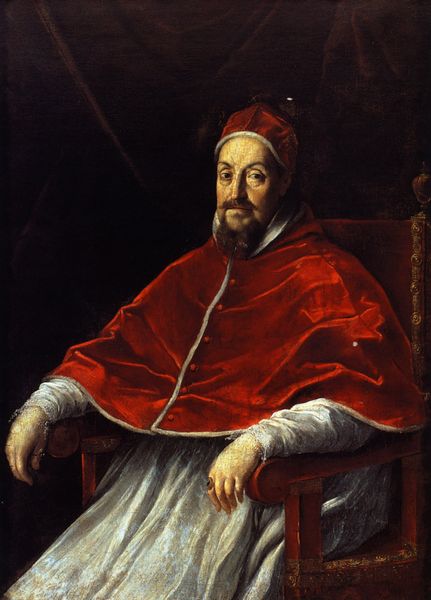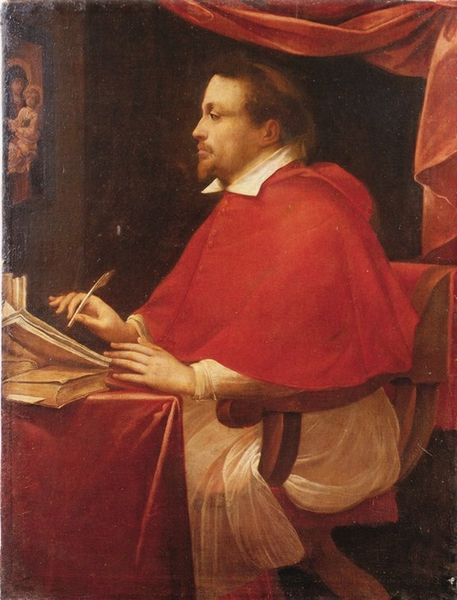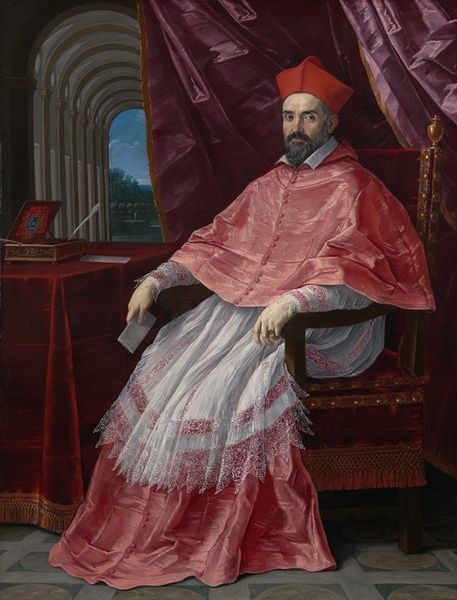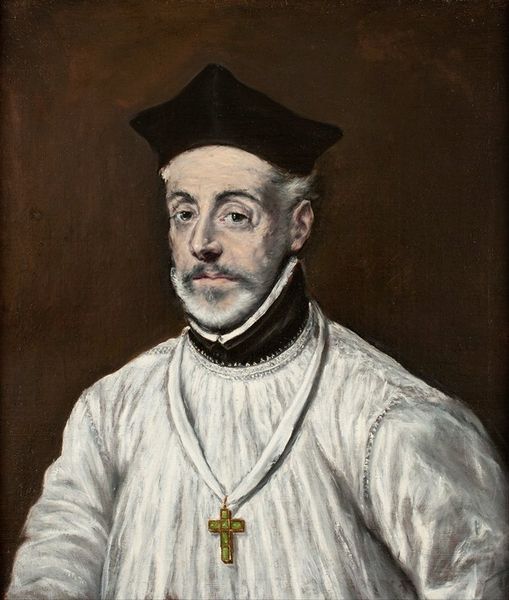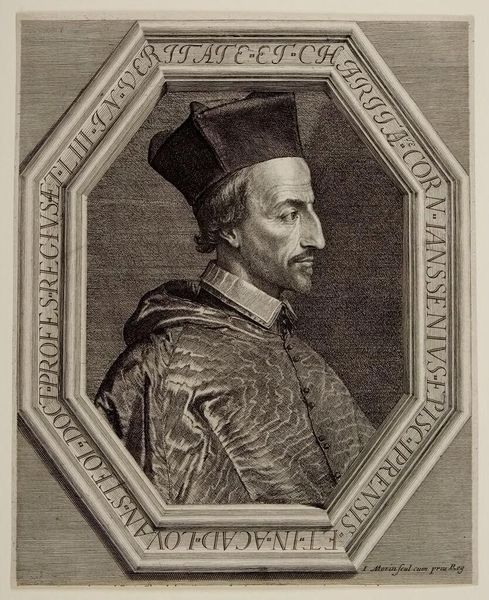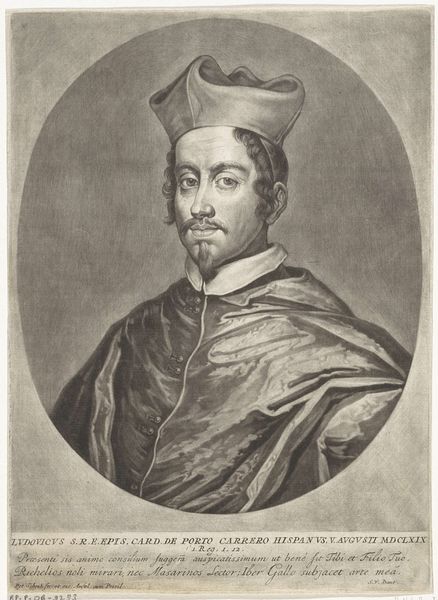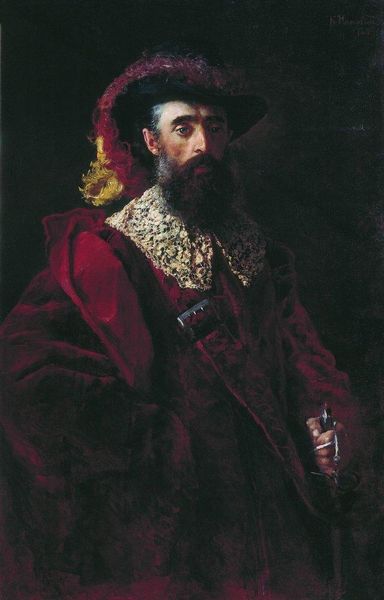
Dimensions: 97 x 73 cm
Copyright: Public domain
Curator: Standing before us is Titian's portrait of Cardinal Alessandro Farnese, painted in 1546. The masterful oil-on-canvas work exemplifies the portraiture style so prevalent during the Italian Renaissance. Editor: My first impression is one of muted grandeur. The interplay of light and shadow across the crimson fabrics creates an immediate sense of restrained power and subtle drama. The limited color palette really concentrates the eye. Curator: The deep, almost somber, color scheme emphasizes the somber and very controlled political environment of the 16th century, right? Cardinal Farnese, a grandson of Pope Paul III, held immense power, and Titian subtly reminds us of his family connections and social standing through the expensive fabrics and overall sense of composed authority. What sort of visual cues do you pick up on in this composition? Editor: I am particularly interested in the diagonals. Notice how the angle of his gaze intersects with the line of his cape, generating a dynamic tension that activates the entire pictorial space. The textural contrast between the smoothness of his face and the drapery is also cleverly done; each element plays against the other to create a more arresting whole. Curator: Precisely. And the materials are very much part of the story. The labor invested in producing such finery signified status and wealth, visually broadcasting Farnese's prominent position within the highly structured social framework of the time. The artwork becomes less about idealization of the human form and more about communicating the politics and social implications of dress, the source of pigment, the patronage system behind these works... Editor: True, but I also find his slightly averted gaze and hand holding the handkerchief add a level of emotional complexity. It goes beyond the display of mere material power to hint at personal considerations and internal deliberations. Titian manages to make it more than just an itemized inventory of expensive commodities, though it certainly is that, as you point out. Curator: Absolutely, Titian captures both the man and the social context in which he existed, doesn't he? The painting serves as an insight into the relationship between individuals, materials, labor, and authority. Editor: In its formal mastery and insightful portrayal, Titian's portrait stands as an extraordinary display of technical artistic ability from the High Renaissance era. The composition is quite simply beautiful.
Comments
No comments
Be the first to comment and join the conversation on the ultimate creative platform.
